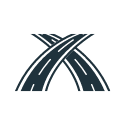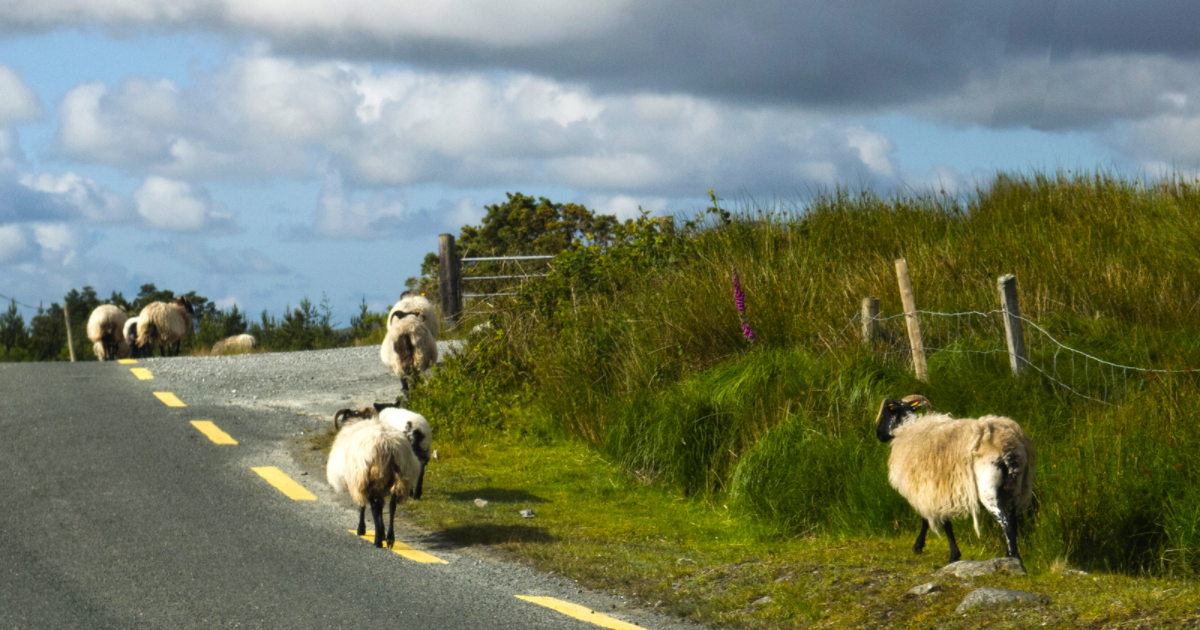Learning to Drive in Morocco
This article is part of our Transportation series. For more information about getting around Morocco, make sure you read our articles about using trains, taxis, and tramways, and our first post about driving in Morocco.
A herd of sheep encroached upon the side of the road. My senses heightened, I slowed down as I eyed the ewe bouncing toward the white stripe. “Stay away,” I thought to myself. Past the sheep was a rolling forest. Where was I? Not in some far-off rural mountain setting in Morocco. No, I was on the interstate highway just past Rabat. My belly was full after stopping for lunch at McDonald’s, and my wife and I had just resumed our trek to Fes. Shortly after (successfully) passing the herd of sheep, we were surprised to see the majority of vehicles exiting off the interstate. To stay on the interstate toward Fes and Oujda was one choice. To veer off to the right was a choice that took people on backcountry roads. “I’m surprised more people aren’t traveling to Fes today,” I told my wife. Less than a mile later, as we approached a toll booth, we stumbled across an interesting discovery; cones blocked the interstate and a police squadron was directing vehicles to turn around. Traffic coming from Fes was still moving, except for some vehicles being pulled over for inspection. Passing through the police stop, we drove in the opposite direction of our destination until we found a place to turn around. Then, we passed the herd of sheep and turned right where the majority of vehicles were going. All along the way, we did not see any indication of this detour.
A stop sign in Arabic, “Qaf.”
For the next 25 miles, we followed slow-moving trucks on a two-lane highway, until we were able to enter back onto the interstate. “Why were there no detour signs?” we continuously asked ourselves. As we frustratingly weaved through the backcountry, we talked about what was happening culturally. Perhaps we missed the detour signs? Perhaps there were no detour signs, but why? In the West, “time is money.” In cold-climate cultures, our schedules are dictated by the clock. However, in a hot-climate culture like Morocco schedules are dictated by events. Time is more relative, so perhaps the police didn’t think it was necessary to adequately warn everyone of the detour. The following week in class we were able to ask our teachers their thoughts about what had happened. “There’s an app,” one teacher told us, “and that’s how you can know if there are detours on the road.” That information will be helpful in the future!
In the last few months, my wife and I have purchased a personal vehicle. During this trip through the sheep-filled forest, we were able to pick up a few more tidbits about driving in Morocco. Here is some information that may be helpful to you if you ever drive in Morocco.
Route signs - In the West we generally know which route to take by the number of that road. In the United States, Interstate 90 runs East-West from Seattle, WA all the way to Boston, MA. Anytime someone tries to enter onto that interstate they will follow a number of signs that indicate I-90 West or I-90 East. Then, along the route, there will be a number of signs that indicate you are on I-90. On this recent trip that involved a lot of interstate driving, I was surprised to see that rarely (if ever) did an exit/entrance sign mention the number of the interstate. Rather, the signs mentioned cities that you would encounter on that route. Then, along the route on each kilometer marker, there was a small number in the corner indicating the route number.
Jawaz - Our city driving rarely takes us through a toll booth. However, on the interstate, toll booths are common. Prior to driving through our first toll booth, we were greeted by two young men in orange vests selling Jawaz passes. If you have this device in your vehicle, you can pass through a toll booth without having to pay cash; rather, you load the device online and the toll price is automatically deducted from the balance. We purchased a reused device for 50dh and paid the young man to load money onto the account. We have heard elsewhere that a Jawaz pass can be purchased for cheaper. Oh well, we paid for that guy’s lunch that day. On a different trip, we were with a friend who was able to purchase a Jawaz pass immediately after the toll booth, so that is an available option if you are going to be doing Interstate driving.
ADM Mobile app - This is the mobile application of which our teacher told us. I do not have experience using this app but did check it out briefly. You can indicate your origin and destination and it will tell you how much you will pay in tolls. It also gives some accident information.
Documents - Owning a vehicle in Morocco requires multiple documents, of which are annual registration, technical revision, insurance, and carte gris. I am not yet an expert on these documents as we just purchased our vehicle, but here’s what I know. The annual registration fee is paid in January and depends on the size of the vehicle. People pay anywhere from 300-6000dh per year. This price can be paid online, which is very convenient. The technical revision (Visite Technique) must be renewed every year and I paid 370dh for it. You have to take your vehicle to a special location (Centre de Controle Technique) where the workers will run a series of tests to determine if the vehicle is road-worthy or needs to be repaired. Vehicle insurance this time was paid by a friend whom I then reimbursed. The price was about 1500dh for three months. Finally, the carte gris identifies you as the owner of the vehicle.
Space - While driving in Morocco is not as chaotic as in other countries, many Westerners will probably be surprised by the level of seeming chaos. Motorbikes weave through cars waiting at a red light. Donkey carts drive through the metropolitan city of Casablanca. Pedestrians walk out in front of cars. A friend once told me that the “right-of-way” belongs to the biggest vehicle. In cold-climate cultures, we are accustomed to our own individual space. However, in hot-climate cultures, the space belongs to everyone. My space becomes our space. Perhaps this is one reason why driving space in Morocco often seems more intimate than in other places.
Driving in Different Cities - I have become more comfortable driving in Casablanca, where there is generally a lot of traffic, but there is some semblance of order. When I entered Fes, I was surprised to see some of the boldness exemplified by other drivers. In one roundabout a driver seemed to recklessly throw his car into the center lane, paying no attention to other drivers. In Casa, people tend to drive more defensively (all of these terms are relative). The pedestrians in Fes also seemed to throw themselves in front of moving vehicles a lot more frequently, without paying much attention.
As I continue to gain more experience driving in Morocco it is possible that some of these observations will change. In the meantime, I am continuing to learn what it’s like to drive in this place.
Are you visiting Morocco soon? Start your travels with us to learn some Moroccan Arabic phrases and cultural dos and don’t and to have the best trip available to you.








“What have we gotten ourselves into?” I asked myself as our car scraped the rocks beneath us. We were traversing a dried river bed in search of our lodging for the night, and my mind was racing to the reaction of the rental car company when we returned the car in a few days. “How much is it going to cost if we total the vehicle?” I continued wondering.